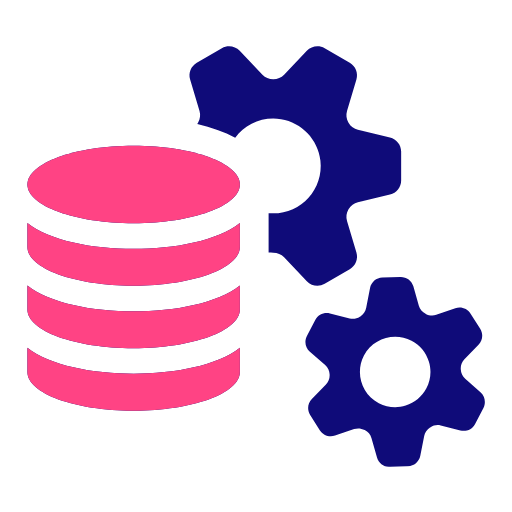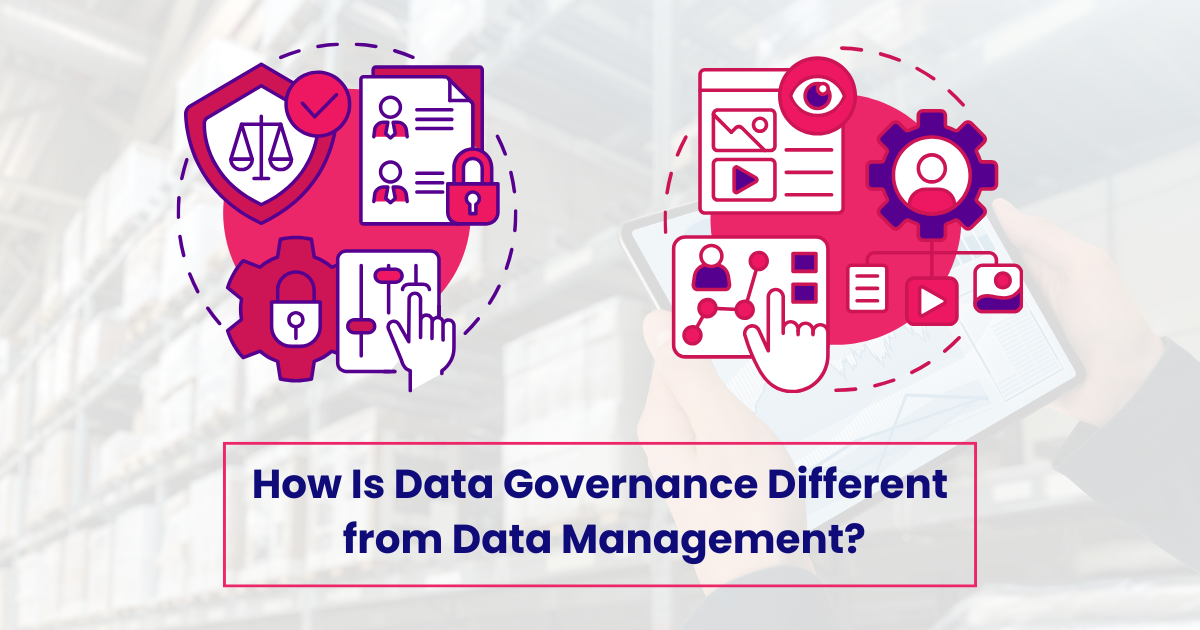Data is at the center of every business today. But as companies grow, so does the confusion around how to manage it. Two terms often get mixed up—data governance and data management.
They sound similar, but they’re not the same. One sets the rules. The other carries them out.
This article clearly explains the difference. If you’re in IT, operations, compliance, or leadership and you’re trying to organize or protect your data, this guide will help you understand where each role fits and why both matter.
Let’s get straight into it.
What Is Data Governance?
Data governance is the system for setting rules, responsibilities, and standards for how an organization handles its data. It’s not about managing the data itself—it’s about deciding who can do what, when, and why. It brings structure and accountability to how data is used across the business.
While data management focuses on execution, governance focuses on oversight. It defines the expectations that guide how data should be handled, shared, protected, and kept accurate over time.

Key Principles of Data Governance
1. Accountability and Ownership
Every piece of data should have a clear owner. Governance sets the framework for assigning responsibility, so it’s always clear who’s in charge of accuracy, access, updates, and decision-making.
2. Policy Creation and Enforcement
Data governance creates the rules. These include how data should be named, stored, classified, and accessed. It also puts systems in place to monitor and enforce those rules so they don’t just sit in a binder.
3. Compliance with Regulatory Requirements
Laws like GDPR, HIPAA, and CCPA require companies to handle data in specific ways. Governance ensures that those requirements are built into everyday operations and that audit trails exist to prove it.
4. Data Ethics and Usage Guidelines
Governance isn’t just about security—it also guides responsible data use. This includes setting rules around consent, avoiding misuse of personal data, and making sure teams don’t overreach in how they apply analytics.
Who Is Responsible for Data Governance?
- Data Governance Council or Board
This group sets direction, approves policies, and handles major decisions about data use across the business. It often includes leaders from IT, legal, compliance, and operations. - Chief Data Officer (CDO)
The CDO leads the overall data strategy and acts as the bridge between business goals and data policy. They ensure governance is aligned with company objectives, not just technical standards. - Data Stewards and Business Stakeholders
Data stewards manage the day-to-day enforcement of governance policies. They work closely with business units to make sure data remains accurate, consistent, and usable. Stakeholders from across departments also play a role by following governance guidelines in their daily work.
What Is Data Management?
Data management is the process of collecting, storing, organizing, and using data to support daily business operations. It’s the hands-on work that keeps information flowing, secure, and usable across systems.
Unlike governance, which sets the rules, data management carries them out. It’s about making sure the right data is available to the right people—accurate, up-to-date, and ready for use.

Core Functions of Data Management
1. Data Storage and Architecture
This involves choosing where data lives—whether in cloud platforms, on-prem systems, or hybrid setups—and how it’s structured for performance, scalability, and cost efficiency.
2. Data Integration and Processing
Data comes from many sources. Management teams combine, clean, and organize it so it works together across tools and teams. This supports reporting, analytics, and automation.
3. Quality Control and Consistency
Good data must be reliable. Management teams fix duplicates, errors, and missing values through validation rules and automated checks, helping teams trust the data they use.
4. Data Access and Security Protocols
This includes managing user permissions, encrypting sensitive information, and protecting data from loss or breaches, while ensuring teams still have access when needed.
Who Handles Data Management?
- IT and Data Operations Teams
They maintain the systems that store and process data, ensuring availability, performance, and backups. - Database Administrators
They manage databases directly, handling storage structure, optimization, and troubleshooting. - Data Engineers and System Architects
These roles design how data flows through systems. They build pipelines, APIs, and infrastructure to connect everything efficiently.
Key Differences Between Data Governance and Data Management
It’s easy to mix up data governance and data management because they deal with the same information. But their roles are different, and both are essential. One defines the rules. The other follows them.
Difference in Focus and Objectives
Data governance focuses on policy, accountability, and oversight. It answers: Who owns the data? What rules apply? How should it be used?
Data management focuses on execution. It handles: Where is the data stored? How is it processed? Who has access?
Strategic vs Operational Roles
Governance is a business-level strategy. It sets long-term direction and ensures data aligns with company goals and compliance standards.
Management is tactical. It supports day-to-day operations, making sure data flows where and when it’s needed.
Policies vs Procedures
Governance defines the rules. For example, a policy may say sensitive data must be encrypted.
Management builds and runs the systems that actually apply the encryption and control access.
Decision-Making and Ownership
Governance involves high-level decision-makers, like the CDO or data governance board.
Management includes IT teams and engineers who carry out technical decisions and support users.
Why Both Are Essential (and Must Work Together)
Data governance and data management are not interchangeable. You need both working in sync. Without governance, management lacks direction, and without management, governance remains just theory.
How Governance Sets the Foundation
Governance defines what matters—accuracy, privacy, compliance, and consistency. It sets expectations that shape how data should be handled across teams. These standards give structure to every data-related decision.
How Management Enforces Governance
Management puts those standards into action. It builds the systems, tools, and workflows that make governance real, such as validating data, managing access, and keeping audit logs.
If governance is the rulebook, management is the play on the field. One without the other leads to gaps, confusion, or risk.
Common Challenges When Confusing the Two
Mixing data governance with data management leads to missed goals, wasted effort, and increased risk. Each plays a separate role, and when that role is unclear, things start to break down.
Governance Teams Get Too Tactical
When governance groups try to manage systems or fix operational issues, they lose focus. Instead of setting a strategy, they get bogged down in technical tasks that belong to IT or data teams.
Management Teams Create Shadow Policies
Without clear direction, data managers often make their own rules, deciding who gets access, how data is labeled, or what tools to use. This leads to inconsistent practices, which hurt data quality and trust.
No One Owns Key Data Decisions
If roles aren’t clear, accountability slips. Everyone assumes someone else is responsible for quality, compliance, or reporting, and nothing gets done properly.
Compliance and Risk Gaps
Without proper governance, businesses risk violating regulations. Without proper management, even well-written policies won’t be followed. The result: gaps that increase exposure to fines, errors, or data loss.
Best Practices to Align Governance and Management
When governance and management teams work in sync, data becomes a business asset instead of a liability. Alignment avoids confusion, keeps systems clean, and helps teams get more value from their data.
Build Cross-Functional Collaboration
Set regular touchpoints between governance leaders and data managers. Keep communication open, so policy changes and technical challenges stay in sync. Governance teams should understand system limits, and management teams should know the “why” behind rules.
Define Clear Roles and Responsibilities
Don’t let teams guess who owns what. Assign data stewards to guide business users and assign managers to maintain systems. Create simple documentation that shows who makes decisions, who sets policies, and who executes them.
Use Technology That Supports Both
Choose platforms that make it easy to track policies, monitor data quality, and manage access. Tools like data catalogs, lineage trackers, and metadata systems can help both sides stay aligned without adding complexity.
Keep Policies Practical
Governance should avoid overcomplicating rules. Policies need to be enforceable. If they don’t match what the tech can handle, they won’t work. Involve management early in the policy design process.
Conclusion
Understanding the line between data governance and data management isn’t just a technical exercise—it’s a business advantage. Companies that get this right don’t just protect their data—they make it work harder. They reduce risk, improve decision-making, and avoid the confusion that slows teams down.
If you’re unsure where your gaps are, start by asking one question: Who decides what should happen with our data, and who makes it happen? If the answer isn’t clear, it’s time to realign.
Governance gives data purpose. Management gives it motion. The businesses that connect both win on accuracy, speed, trust, and compliance—all at once.
Now’s the time to treat your data like the strategic asset it is—not just something your systems store, but something your business runs on.



